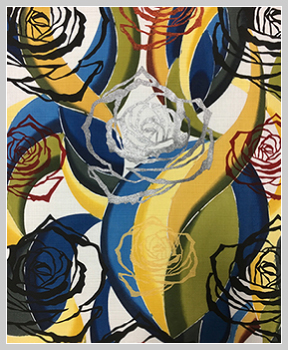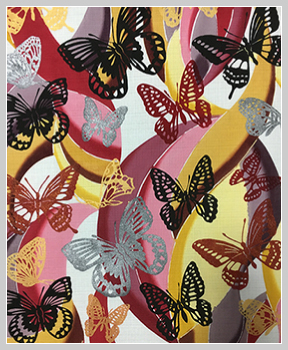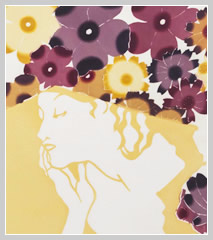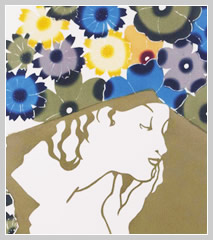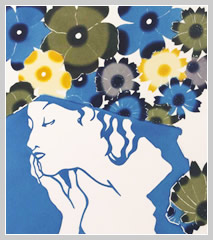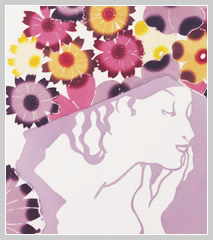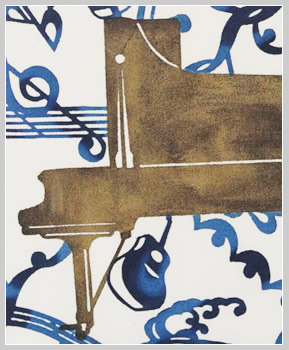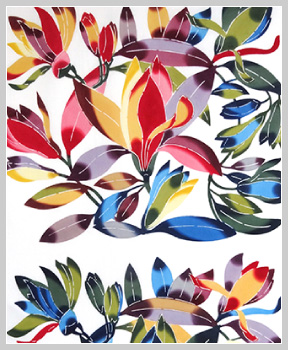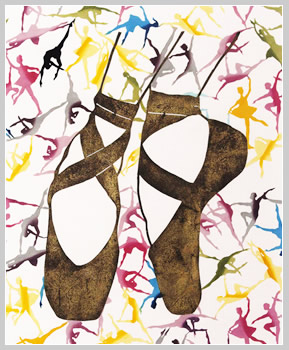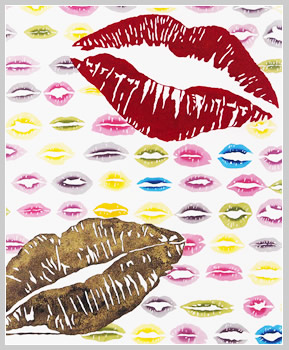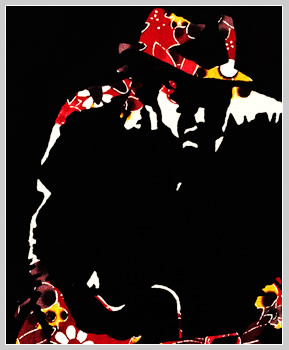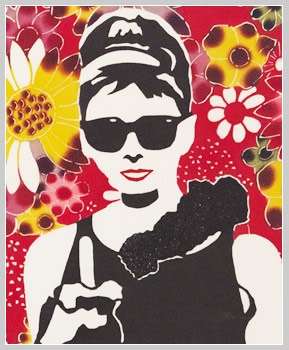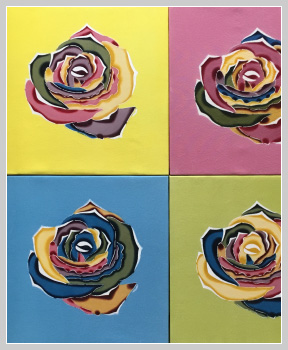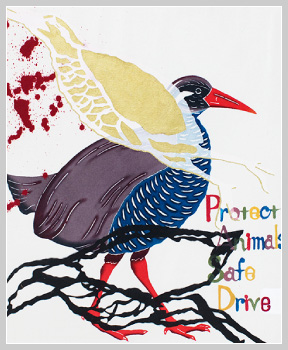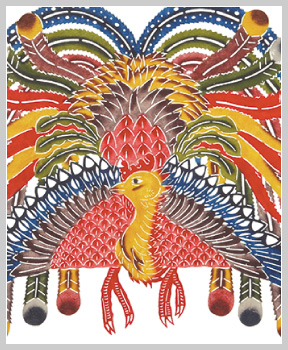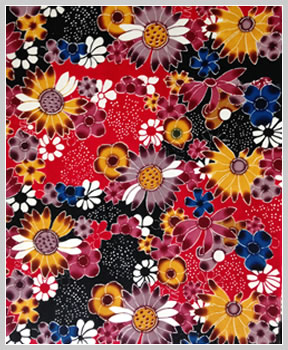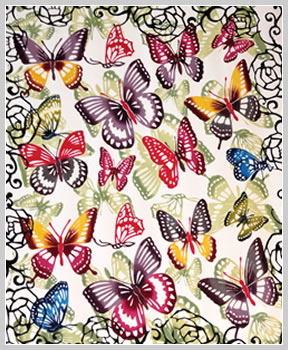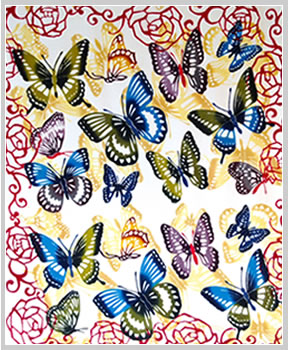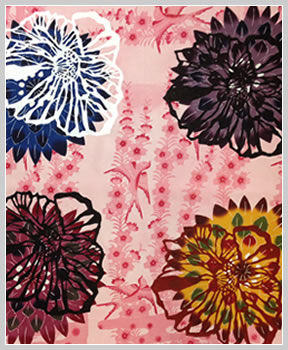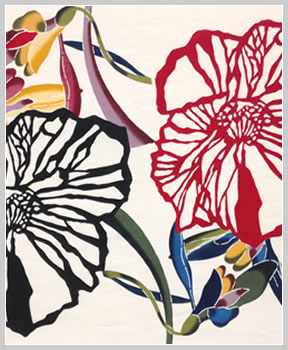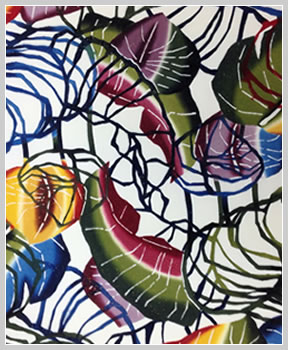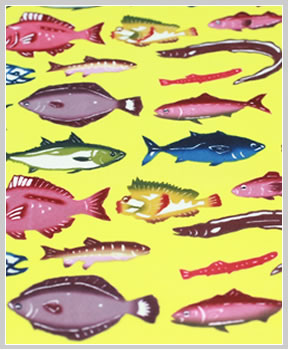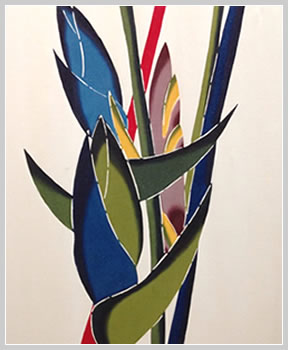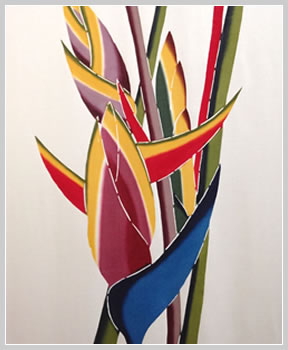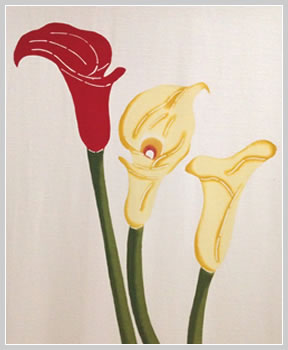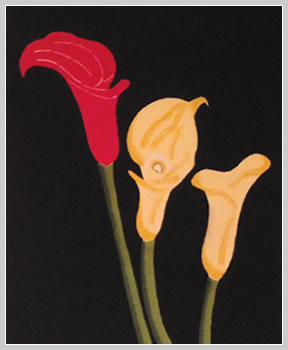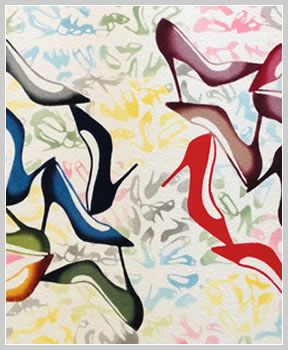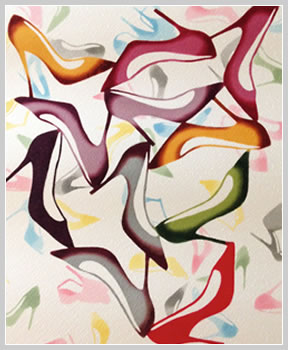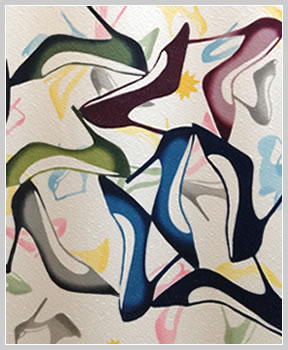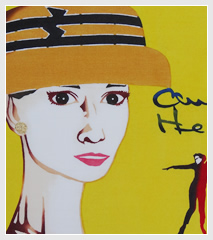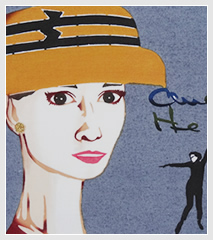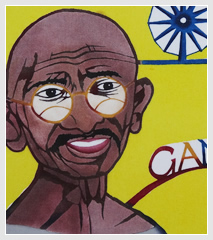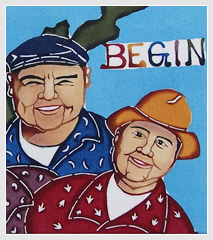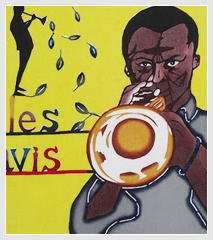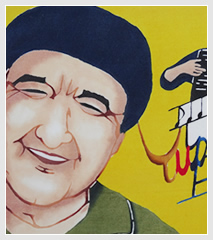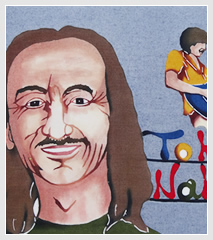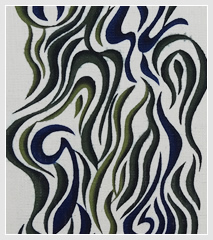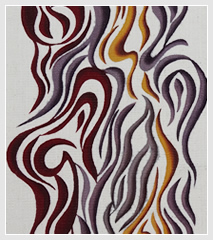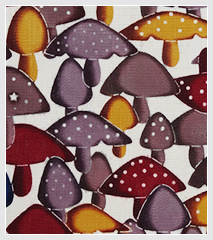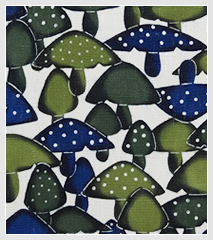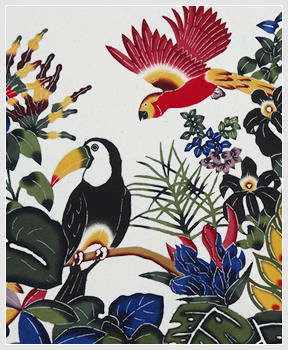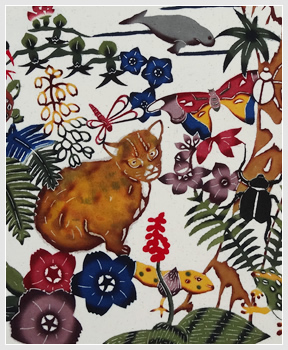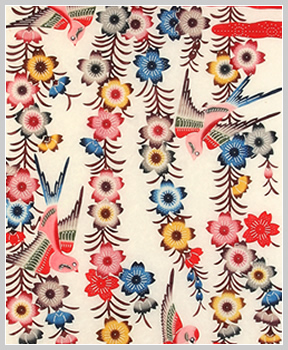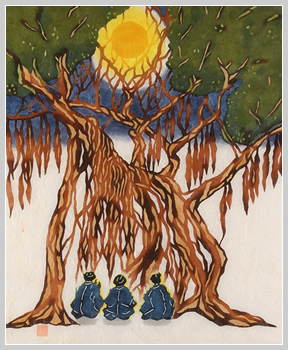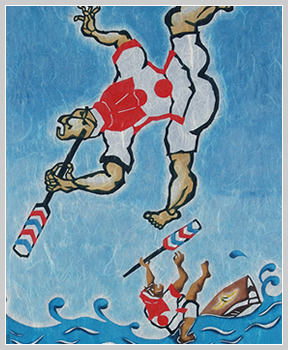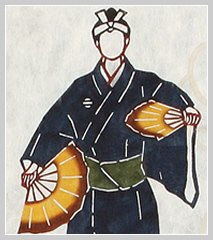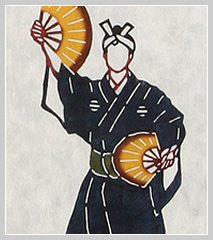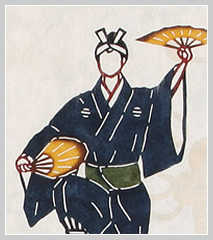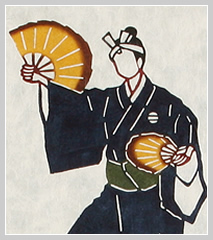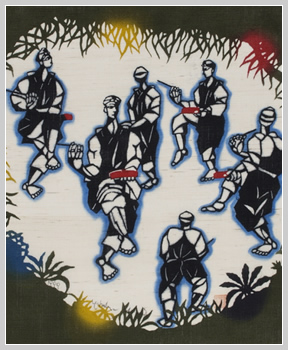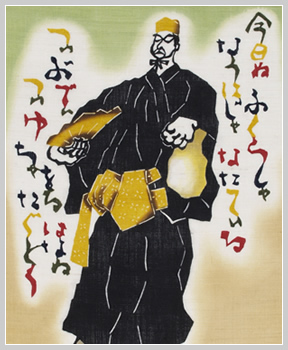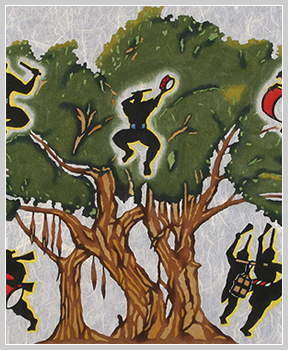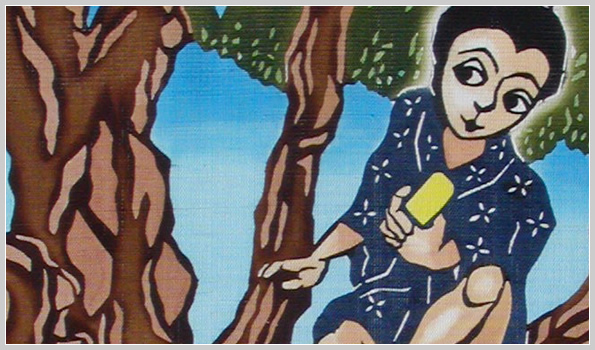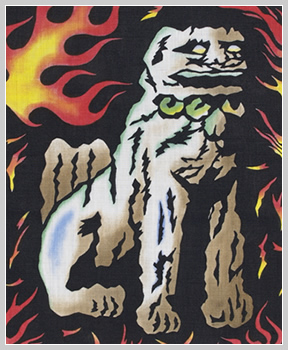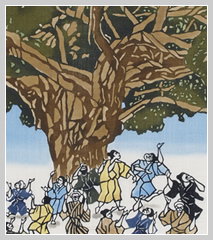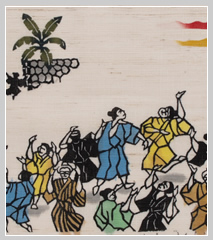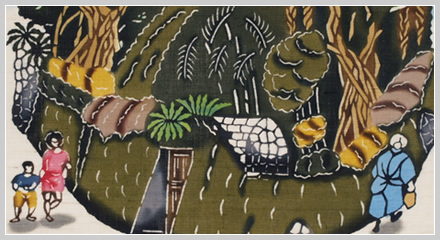
Flowers for Mucha
I have copied Mucha’s paintings before. These are the works in which I copied one of them again and decorated it with Bingata flowers
Black Gold Piano
The work with a pleasant shade in which I mixed gold powder and black ink from burnt pine well balancedly
Chaussures Pointe
The work in which the chaussures pointe needed feet and legs as I thought, although I tried to paint them without like a series of pumps
Blues Guitarist
The work I created, wishing the sound was audible since I made the black background stand out
Multi-flowered Design
This is a work where I placed flowers closely together and expressed baby's breath in black.
Butterflies Hovering over the Black Roses
This is a work where I placed butterflies over the black roses three times and finished dyeing them.
Butterflies Hovering over the Black Roses
This is a work where I placed butterflies over the red roses three times and finished dyeing them.
Four Flowers
This is a work where I placed cutout-like flowers over each of the four flowers and arranged Okinawan Classic Bingata on the background.
Cutout-like Flowers
This is a work where I arranged the flowers that started blooming together with the cutout-like flowers.
Swinging Japanese Banana Plants and Monstera Plants
This is a work where I slightly moved the Japanese banana plants and the monstera plants, the representatives of the tropics, from each other and finished dyeing them.
Pictorial Book of Fish
This is a work where I lined up fish I wanted to eat like a pictorial book of fish.
Blue and Green Heliconias
This is a work where I finished dyeing Red heliconias characteristic of the southern countries with cool colors.
Yellow and Purple Heliconias
This is a work where I finished dyeing Red heliconias characteristic of the southern countries with warm colors.
Calla Lilies on a black background
This is a work where I put calla lilies like three sisters on a black background and expressed attractiveness in it.
Pumps: Two Sets of Gradation
This is a work where I arranged the pumps that have beautiful forms in an Okinawan Bingata color.
Pumps: Gradation1
This is a work where I arranged the pumps that have beautiful forms in an Okinawan Bingata color.
Pumps: Gradation2
This is a work where I arranged the pumps that have beautiful forms in an Okinawan Bingata color.

Dyed Washi Paper with Classical Bingata Design
Washi paper dyed with a classical Bingata design of swallows and sakura (cherry blossoms).
uutootu (Prayer)
There are sacred places in Okinawa called utaki, where people worship the spirits of the ancestors protecting the village. Utaki are important to the local people as spiritual centers. Every month, priestesses called Kaminchu perform various rituals. When I visited the remains of an old castle that was built before the Ryukyu Kingdom was united, I saw women performing a ritual uutootu at the utaki there. This piece was created from that memory.
Ha-re, dragon boat race
Ha-re (Ha-ri, dragon boat race) is an event where people express thanks for the bounty of the ocean and pray for safe voyages and an even bigger catch. It is held at many fishing ports in Okinawa on May 4th of the lunar calendar. This piece depicts the most famous ha-re, the kun’nukase (overturning boat race), which is held in the Itoman area. When the race starts, all paddlers jump into the water and turn over their small boat (sabini). Then, they turn the boat back over, get back into it, and continue to paddle to the goal while bailing out the water. You can sometimes see boats tip over when the crew is not good at bailing out the water.
Nubui Kuduchi (Ryukyuan dance)
Nubui Kuduchi is a dance about travelling from Okinawa to Satsuma (Kagoshima).
After the Satsuma Clan’s invasion, the Ryukyu Kingdom fell under control of the Tokugawa Shogunate. The Shogunate required representatives from Ryukyu to travel to Edo (Tokyo) to greet the Shogun with gifts and participate in various events.
This was a ritual to confirm and boast the Tokugawa’s power over Ryukyu.
Nubui Kuduchi is the most popular Ryukyuan dance for males. This piece depicts the dancers and the song’s lyrics.
Eisa
The biggest event in Okinawa is Eisa. Eisa is a centuries-old tradition, unique to Okinawan culture. It is a type of folk dance accompanied by singing, chanting, and drumming. It is held for three consecutive days, July 13-15th of the lunar calendar, to pay respect to the ancestors and mark the end of the Obon season. On the last day, ukui, Eisa is performed after the people see off their ancestors. This piece depicts Eisa that originated in the Heshikiya area on Central Okinawa’s Katsuren Peninsula.
Kajadefu(Ryukyuan dance)
Kajadefu is a festive ritual dance usually performed as an opening dance at celebrations. The dancer is an image of myself,when I was learning Okinawan dance.
Eisa dance
It is said that spirits live in gajumaru (banyan) trees. The young man dancing Eisa in this piece symbolizes the spirits in the tree.
An old tale of Muucii
This piece is based on a story depicting a beautiful girl who lived near Shuri castle . She had a brother who turned into an ogre , and caused much trouble to the villagers. The sister thought that she was the only one who could stop her brother. One day in December, she called her brother up to a hill where many Akagi trees grew. This hill was south of Shuri Castle, near the stone road in Kinjo Town. She brought rice cakes made from rice for her and rice cakes made from iron for her brother. She ate the rice cakes easily, but the rice cakes were too hard to eat for her brother. He looked up at his sister, who was sitting on a high branch of an Akagi tree with her kimono half open. He asked her, “How come you can eat this rice cake so easily? And, why does it look like you have two mouths?” Smiling, she answered, “The top mouth is for eating muucii (rice cakes), and the bottom one is for eating ogres!” Her ogre brother was astonished and stepped back. He fell from the cliff and died. This is a well-known scene from Ryukyu folk tales. Muucii are rice cakes covered with San’nin leaf (Japanese: Gettou; English: Shell Ginger). Each house makes muucii from mochi rice powder on December 8th of the lunar calendar and eats it with hope for the good health of family members.
Shisa (lion-dogs)
Stone statues of shisa (lion-dogs) were made to protect people and villages from misfortune. This particular statue was believed to protect people from misfortunes related to fire. This shisa statue is famous for surviving intense bombing during the Battle of Okinawa.
Michijune
Michijune means to parade through the streets dancing for celebratory
occasions or festivals.
This piece shows people dancing together in a michijune.















